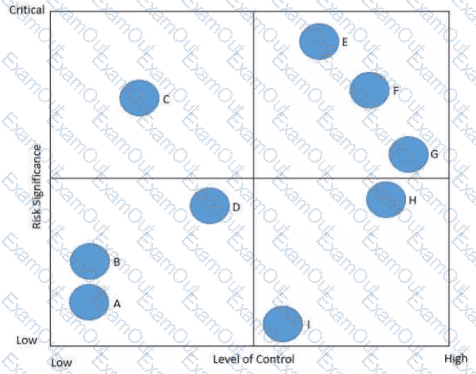The external auditor has identified a number of production process control deficiencies involving several departments. As a result, senior management has asked the internal audit activity to complete internal control training for all related staff. According to IIA guidance, which of the following would be the most appropriate course of action for the chief audit executive to follow?
Which of the following represents a ratio that measures short-term debt-paying ability?
According to IIA guidance, when would an interim report typically be produced?
Which of the following statements about internal audit's follow-up process is true?
In the following risk control map risks have been categorized based on the level of significance and the associated level of control. Which of the following statements is true regarding Risk C?

During a review of the treasury function an internal auditor identified a risk that all bank accounts may net to include in the daily reconciliation process.
Which of the following responses would be most effective to mitigate this risk?
The board of directors of a global organization has found an increased number of reported cases of unethical practices since last year. To assist the board in gaining a better understanding of the degree of ethics awareness within the organization, which of the following actions should be undertaken?
Acceding to MA guidance, when of the Mowing strategies would like provide the most assurance to the chief audit executive (CAE) that the internal audit activity's recommendations are being acted upon?
An internal auditor is asked to review a recently completed renovation to a retail outlet. Which of the following would provide the most reliable evidence that the completed work conformed to the plan?
According to IIA guidance, which of the following provides additional insight into errors, problems, missed opportunities, or noncompliance to improve the effectiveness and efficiency of an organization's control process?
Which of the following is essential for ensuring that the internal audit activity’s findings and recommendations receive adequate consideration?
Which of the following statements is true regarding partnership liquidation?
Which of the following is required to classify, label, organize, and search big data stored and used in an organization?
The objective of an internal audit engagement is to evaluate the organization's ethics program. Which of the following should be included in the scope of the engagement?
To which of the following aspects should the chief audit executive give the most consideration while communicating an identified unacceptable risk to management?

